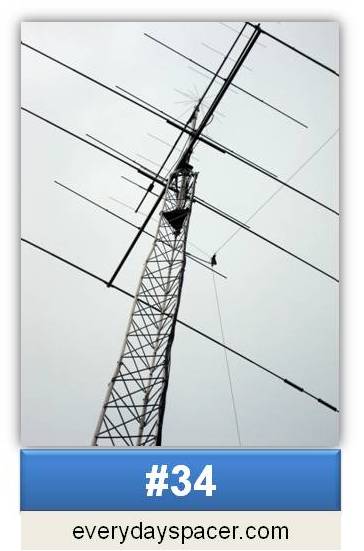 Ham Radio Operators have a long history of involvement with all kinds of things including space exploration.
Ham Radio Operators have a long history of involvement with all kinds of things including space exploration.
“Amateur radio (also called ham radio) is the use of designated radio frequency spectrum for purposes of private recreation, non-commercial exchange of messages, wireless experimentation, self-training, and emergency communication. The term “amateur” is used to specify persons interested in radio technique solely with a personal aim and without direct pecuniary interest, and to differentiate it from commercial broadcasting, public safety (such as police and fire), or professional two-way radio services (such as maritime, aviation, taxis, etc.).
“The amateur radio service (amateur service and amateur satellite service) is established by the International Telecommunication Union (ITU) through the International Telecommunication Regulations. National governments regulate technical and operational characteristics of transmissions and issue individual stations licenses with an identifying call sign. Prospective amateur operators are tested for their understanding of key concepts in electronics and the host government’s radio regulations. Radio amateurs use a variety of voice, text, image, and data communications modes and have access to frequency allocations throughout the RF spectrum to enable communication across a city, region, country, continent, the world, or even into space.” ~Wiki
When I wrote about watching satellites pass overhead, I got the local info for Heaven’s Above and we went looking. We actually saw a few too. The list that night included some flybys I recognized as ‘HamSats’ which reminded me that there is a whole (huge) community of people collaborating to secure satellites in space for use by regular people.
If you check Heaven’s Above, click on the link Radio amateur satellites – 24 hour predictions (all passes) and you will probably see dozens of satellites listed. Sure, you might see them at night like the regular satellites. They were launched to be used by Hams though! They can help bounce signals between two distant points on Earth.
We’ll delve a little more into this again next time.
This was a fun article Catching Satellites on Ham Radio with a cute girl. The face of space isn’t ALL male!
NOTES:
*Some Equipment is Probably Involved
*Hams Are All Ages
*Some Equipment May be Donated, Perhaps Not All though
Sources
*http://en.wikipedia.org/wiki/Amateur_radio
*http://en.wikipedia.org/wiki/ARISS
*http://www.heavens-above.com/amateursats.aspx?lat=34.17056&lng=-118.8367&loc=Thousand+Oaks&alt=303&tz=PST
*http://www.amsat.org/amsat-new/satellites/status.php
*http://blog.makezine.com/2009/07/22/catching-satellites-on-ham-radio/
*http://www.flickr.com/photos/ka3rkw/178689031/





































